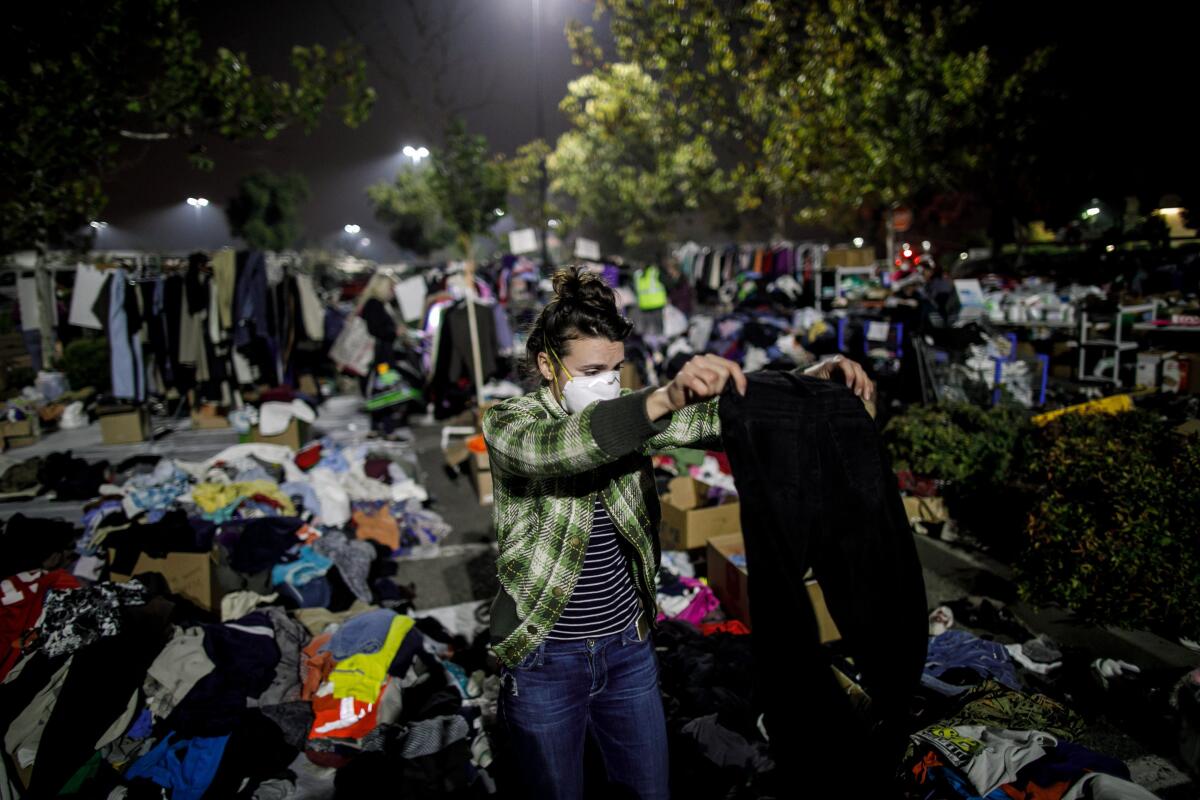Temperature checks and hotels: Newsom details new precautions for wildfire evacuations

- Share via
SACRAMENTO — Gov. Gavin Newsom and state officials said Thursday that California will shelter wildfire evacuees in hotels, require temperature checks and make other changes to protect people from COVID-19 as the state battles an increase in blazes during the pandemic.
The coronavirus outbreak presents a new challenge to the longstanding wildfire problem in California, a state that has experienced some of the most destructive fires in recent years. With the potential for the coronavirus to spread at fire camps and shelters, the Newsom administration is rethinking how the state should house, feed and screen firefighters and evacuees.
“We’ve got to keep them safe,” Newsom said. “We’ve got to keep these environments COVID-free.”
The governor discussed the changes as the coronavirus continues to spread in California at a high rate, with nearly 300,000 confirmed cases and a growing number of hospitalizations.
Newsom warned that the number of wildfires has increased in the first months of the year to 4,112, up 73% compared to the same period of January through June in 2019. The governor also said the state has been better able to suppress fires than in prior years, noting the average acreage of each fire is lower than previous counts.
“This is the time of year where fires start to get bigger and more difficult to control,” said Thom Porter, chief of the California Department of Forestry and Fire Protection.
Newsom discussed wildfire preparations at a news conference Thursday at McClellan Air Force Base northeast of Sacramento, where he stood in front of a new helicopter used by Cal Fire, and touted budgetary investments in aircraft and other areas of wildfire prevention and response.
The governor announced plans to spend $72.4 million in emergency wildfire funds to hire 858 more firefighters and six California Conservation Corps crews to make up for a shortage of inmate firefighters who have been released from prison due to the coronavirus outbreak.
Thursday marked the first time in months that Newsom focused his public comments on wildfires. Before the pandemic hit, Newsom was engulfed in wildfire crises for much of his first year in office.
Pacific Gas & Electric filed for bankruptcy in early 2019, saddled with some $30 billion in debt from wildfires sparked by its equipment. The decision prompted Newsom and lawmakers to call for an overhaul of the troubled company while adopting a multibillion-dollar wildfire fund as a financial backstop for the state’s utilities last summer.
Months later, power outages blanketed much of California as utilities ramped up the use of intentional shutoffs in the fall to prevent a repeat of devastation wrought by the Camp fire, a 2018 blaze caused by PG&E equipment that became the deadliest in state history.
A judge approved PG&E’s bankruptcy plan last month. Newsom said PG&E, whose equipment has a long history of causing California wildfires, will now be required to meet new safety standards.
“They’re coming out with new expectations, and ultimately new accountability and responsibility, and a new criteria that if they don’t perform, the state of California can intervene in ways we’ve never been able to with a private utility in the past,” he said.
Newsom and state officials said the new wildfire evacuation protocols will include health screenings upon entry to a shelter, cleaning staff, prepackaged meals, the separation of sick evacuees and the presence of medical and mental health professionals at shelter sites, which could include hotels, college dorms, Airbnb homes, fairgrounds and campgrounds.
Firefighters will also be required to physically distance, conduct remote briefings and alternate shifts to reduce the chance of COVID-19 infection.
More to Read
Sign up for Essential California
The most important California stories and recommendations in your inbox every morning.
You may occasionally receive promotional content from the Los Angeles Times.














